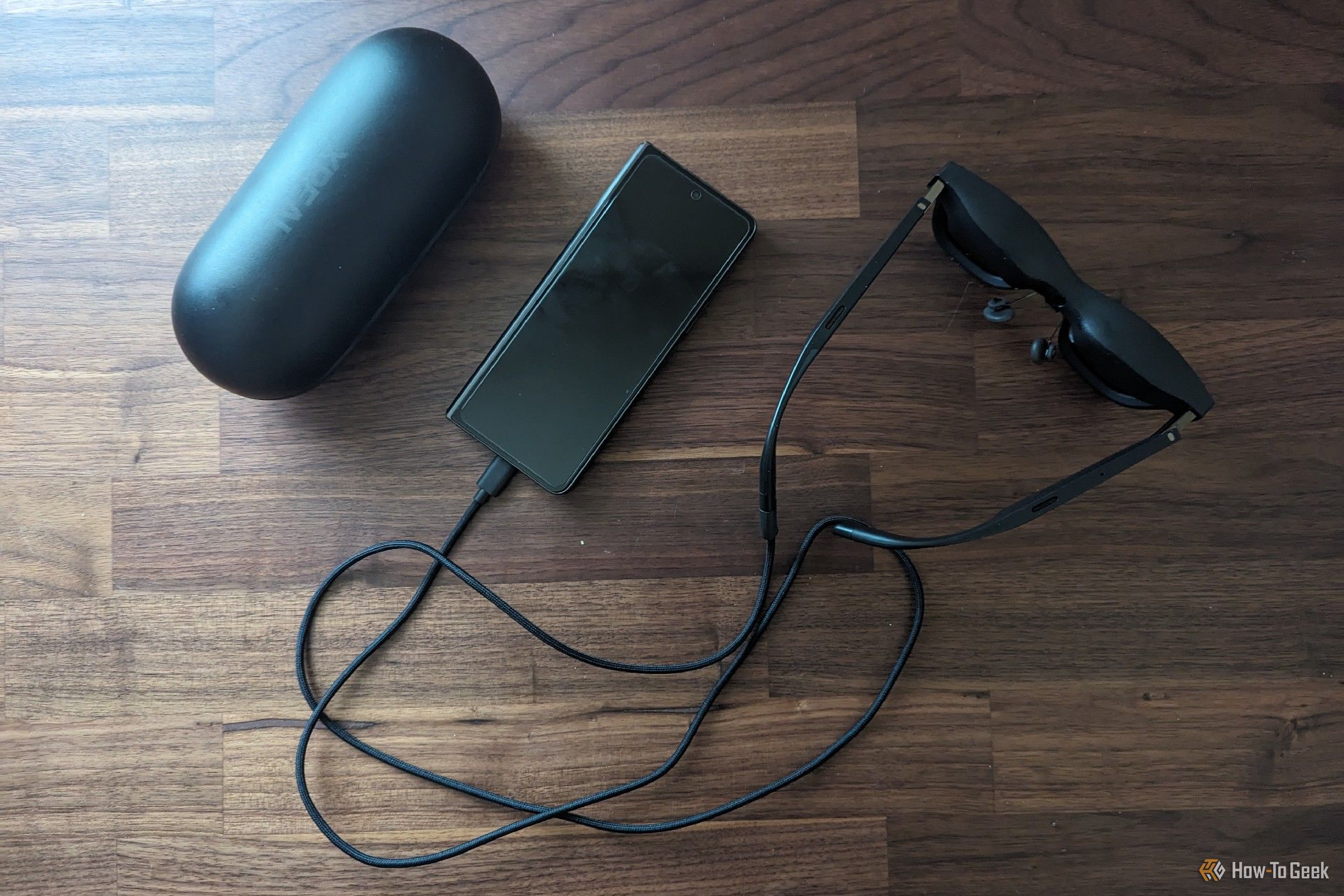Wearable display maker XREAL now confirms that it is developing the world’s first Android XR glasses. The company hasn’t revealed too many details, though early images show that the glasses, called Project Aura, are extremely slim and portable.
Android XR was jointly developed by Google and Samsung and revealed at the I/O conference in May 2025. It’s designed to compete with existing mixed reality platforms like Meta Quest and Apple Vision Pro, though it clearly takes more inspiration from the latter than the former—Android XR has a very bubbly UI, it makes liberal use of multi-window virtual display layouts, and it can run existing Android apps without any tinkering (Meta Quest is Android-based but doesn’t leverage the Google Play store).
More notably, Google and Samsung are treating Android XR like an open ecosystem. That’s something that sets it apart from Vision OS, and although Meta is trying to spin its Horizon OS into an open platform, it has failed to do so in a timely manner. Android XR will be featured in third-party hardware on day one.
“At XREAL, we’ve always pushed the boundaries of what XR hardware can do — combining performance, comfort, and design into something people can wear every day,” said Chi Xu, Co-founder and CEO of XREAL. “Partnering with Google on Android XR takes this vision to the next level. Project Aura reflects the power of this collaboration — merging a robust platform with advanced chipsets and our expertise in optical systems. We believe this is a breakthrough moment for real-world XR.”
That’s where XREAL comes into play—it’s the first company to announce an optical see-through (OST) Android XR device. Unlike Samsung’s upcoming headset, which uses virtual see-through (VST) technology to bring the outside world into view (Apple and other brands call this “passthrough video”), XREAL’s Project Aura projects images on top of clear glass lenses, meaning that the real world is visible at all times without the use of a distorted, low-res video feed. (Like other XREAL glasses, Project Aura will probably have some kind of lens opacity feature that lets you block the outside world on command.)
Unfortunately, XREAL hasn’t revealed any technical specs for the Project Aura glasses. We know that the glasses are powered by a Snapdragon XR chipset, and early images show that the glasses have three cameras—two along the rim of the frame and one on the nose bridge, but that’s about it. I assume that Project Aura will feature adjustable lens transparency, integrated Bose speakers, and a 1080p display, as XREAL offers similar functionality with its One Pro and Air 2 glasses, but I could be wrong.

Related
I Combined a Phone, AR Glasses, and Cloud Gaming into a Hybrid Gaming Rig
I’m now playing games in my own private theater, wherever I want.
I’d also like to know whether Project Aura is a true, self-contained XR solution. XREAL briefly described the glasses as “tethered,” meaning that they probably connect to an external Android XR device for video processing and battery power, though this hasn’t been explicitly confirmed by the company. While a self-contained solution would be pretty cool, external processing would be more flexible, as it would (presumably) facilitate a path for easy hardware upgrades and provide wired virtual monitor functionality for phones, laptops, or other non-Android XR video sources.
We’ll get a closer look at Project Aura during the Augmented World Expo (AWE) in June 2025. Samsung says that its first Android XR device will arrive before the end of the year, so it’s possible that the XREAL Project Aura will arrive in a similar timeframe.
Source: XREAL





